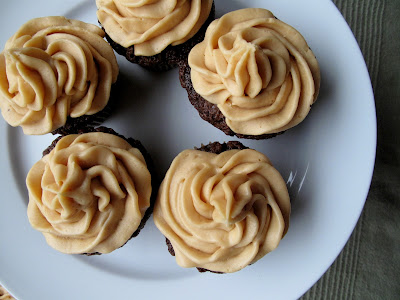It's too late to make this sauerkraut for Thanksgiving, but sauerkraut with Thanksgiving dinner is apparently just a Baltimore thing, anyway. If you don't live in Baltimore and have never had sauerkraut as a part of your holiday spread, I would highly recommend that you try it next year--the tartness of the sauerkraut is a pleasing companion to the tart cranberry sauce. I love to take a bite of the stuffing, a bite of the tart sauerkraut, a bite of the turkey, followed by a bite of the tart cranberry sauce--it makes for such a nicely rounded dinner, and helps prevent tastebud fatigue.
While store-bought sauerkraut is vinegary and intense, home-made sauerkraut takes the same fermented, almost pickled cabbage taste, and treats it in a much more delicate, subtle manner, and the sauerkraut becomes almost effervescent. It's like moonshine made in the wilds of the Appalachians versus Baker's or Bookers whiskey. Or like grappa versus Grey Goose. Or like a pie bought at Walmart compared to a homemade pie made with fruits from your own tree...you get my point.
Not only is homemade sauerkraut delicious, it couldn't be simpler--you basically cut up a head of cabbage, toss it with some salt, smoosh it down every once in a while, and set it aside and mostly leave it alone. The most you'll have to do is occasionally scrape some of the scummy stuff off the top of the brine. It doesn't hurt anything, but it can apparently affect the taste of the sauerkraut. That, and you might want to move your setup outside if your house starts to smell like cabbage, especially if your house, like mine, frequently smells of cabbage anyway because your downstairs neighbors like to make their own kimchi.
Sauerkraut
- 5 pounds cabbage
- 3 tablespoons kosher salt
Note: All of the recipes that I consulted directed that the cabbage be put in a crock (a vessel with a round opening and high, straight sides). I don't have a crock, nor do I know anyone who has such a thing, so I used a bowl. My plate fit snugly over the cabbage, so I figured it would work just fine. Perhaps there's a reason to use a crock, maybe it has something to do with evaporation, but I think you'll be okay if you decide to also go with a glass or ceramic bowl. You can even use a food-grade plastic bucket; just don't use metal, as it's reactive.
Remove any outer damaged or wilted leaves, but do not wash the cabbage--its natural bacteria is what's going to do the fermenting. Cut the head of cabbage into quarters and remove the hearts if you would like to, and thinly slice (or shred in a food processor)-you want the slices to be about the thickness of a nickel, ideally. Place the cabbage in the bowl or crock as you go, and sprinkle each layer with some of the salt. When all of the cabbage is in your bowl or crock, mix it up with your hands, then press down as hard as you can on it--you really want that cabbage smashed in there.
Cover the cabbage with a plate that fits snugly inside of your bowl or crock. Weight it with something heavy and clean, like a boiled rock, a big can of tomatoes, or a pitcher full of water. Cover it all with a dishtowel to prevent bugs and dust from getting in there. Let it sit for an hour and wilt. At the end of the hour, remove your weight and smash the cabbage down some more with your hands.
(This is what my setup looked like.)
Periodically, whenever you think of it, mash the cabbage down some more with your (clean) hands. By the next day, the cabbage should have exuded enough liquid that the cabbage is submerged. If not, dissolve a teaspoon of salt in a cup of water and pour it over the cabbage. Continue to do this until all of the cabbage is covered, and there's a bit of extra water over the top of the cabbage.
As the cabbage goes through its fermentation cycle, some water may evaporate, so you might have to periodically add more water. Also, check it every day or two, and remove the scum that has formed on the top. You won't be able to remove all of it, and that's okay--don't drive yourself crazy. The scum/mold is not harmful, and the cabbage is in an anaerobic environment, so nothing bad should be forming in the brine.
The cabbage will ferment more quickly if it's kept inside, but it can also be kept outside if the temperatures are above freezing. Some people claim that a slower fermentation makes for a tastier sauerkraut. In either case, your sauerkraut will be ready in about 3-6 weeks. Taste it occasionally to see how it's progressing, and when it's reached a stage of tanginess that you like, scoop it out into glass jars (with the brine), and store in the fridge.









































